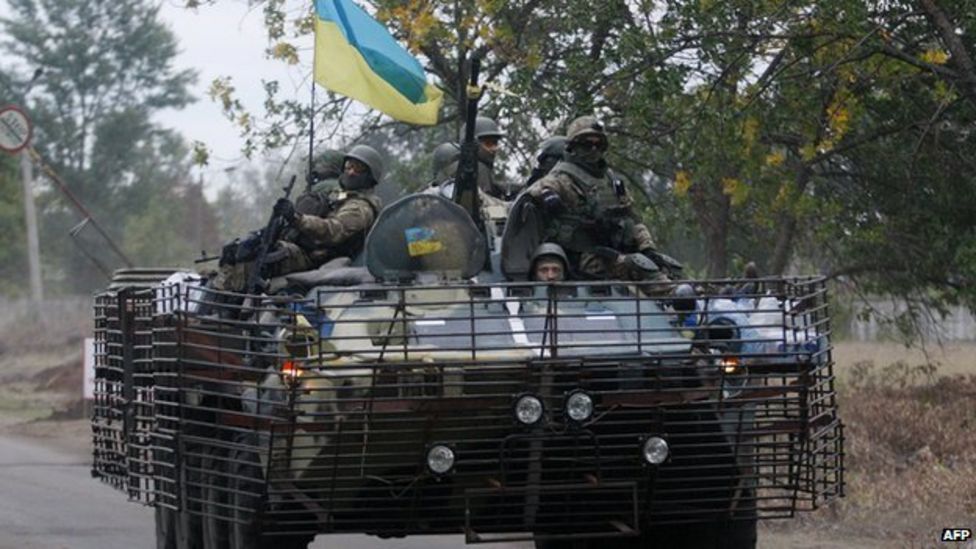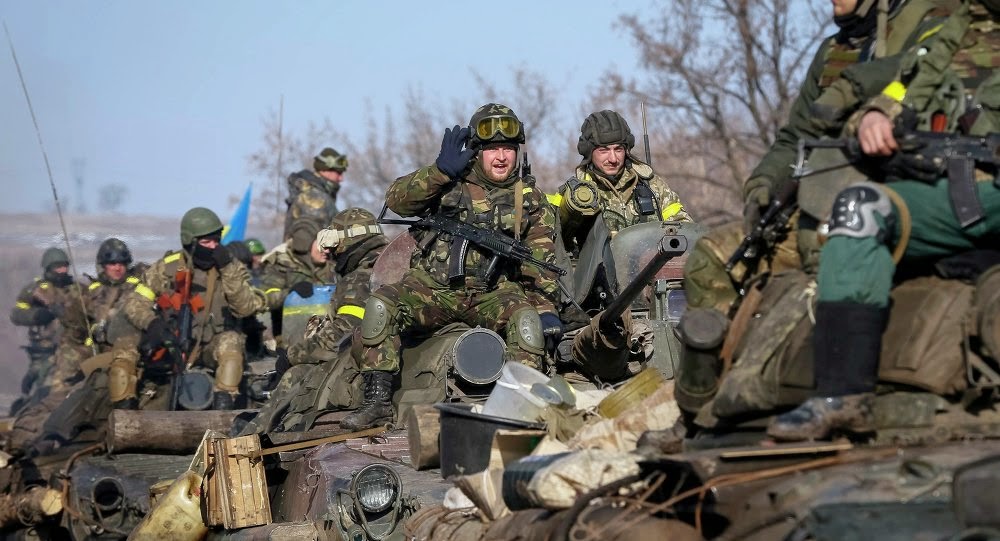
The stated aims of Russia’s “special military operation” in Ukraine include the de-Nazification and demilitarisation of the Kiev regime.
In opposition, the NATO member states led by the US are arming the Ukraine and its Nazi battalions, while sending thousands of “volunteers”, “advisors” and other mercenaries to fight with the aim of prolonging the war for years.
The question, as always, is who is winning?
In a media briefing on March 25, the Russian Ministry of Defence (MoD) revealed some of its estimates of Ukrainian military strength before the operation commenced on February 24, focussing on heavy equipment, along with its claims of how much had been destroyed so far.
According to the MoD, Ukraine began the war with 2,416 armoured vehicles — although it did not say how many were main battle tanks (MBTs), infantry fighting vehicles (IFVs) or armoured personnel carriers (APCs).
The MoD also listed 1,509 field artillery guns and mortars, 535 multiple launch rocket systems (MLRS), 152 fixed-wing aircraft, 149 helicopters, 180 medium- and long-range surface-to-air missile (SAM) systems and 300 radars of various kinds in the Ukrainian inventory.
The MoD’s twice-daily briefings include updates on Ukrainian loses from those equipment stocks.
The April 29 morning report claimed 2,638 tanks and armoured vehicles destroyed — 222 more than the ministry said the Ukraine started the war with.
On top of that are the many reports of Russian troops or Donbass militia capturing Ukrainian equipment intact or repairable and putting it back into service for themselves.
Two-thirds of the Ukrainian air force’s helicopters and four-fifths of its fighter and attack jets are gone as well, according to Moscow, along with most of its anti-aircraft weapons.
Even the US Department of Defence’s spokesman admitted in mid-April that the UAF had less than 20 aircraft in late March.
And Ukraine does not have a navy anymore.
And most importantly to the Russian way of warfare, the MoD claims to have knocked out almost 1,200 Ukrainian artillery pieces and over 300 MLRS units. Meanwhile the Russian air and missile forces have crippled the Ukraine’s ability to replace those losses, destroying factories and repair centres.
Either the MoD under-estimated Ukrainian strength had to start with, or is over-claiming (which always happens in war) or the heavy gear sent by NATO is starting to turn up on the battlefield.
The Ukrainian government has made exaggerated claims of Russian casualties and losses but is very reticent about its own, admitting to only 3,000 soldiers killed and a handful taken prisoner so far.
Russia is also guilty of the old US sin of publishing body-counts. On April 16 the MoD claimed Ukraine had suffered 23,367 “irreplaceable” casualties.
The next day it stated that of the 6,824 foreign mercenaries who came to fight for Kiev, Russian forces had “eliminated” 1,035, while 912 had fled the country and 4,877 were still hanging around like a bad smell.

Looking on the Bright Side…
Some Western “military analysts” asserted before the war that the Ukrainian forces had 820-850 tanks, mostly old T-64s left over from the dissolution of the USSR in 1991.
If one assumes a ratio of three APCs or IFVs to every MBT, then the Ukraine had about 2,500 infantry carriers and 3,400 armoured vehicles in total.
NATO states were already pouring arms into the Ukraine for years before the conflict escalated, and have sped up the deliveries since then.
The US says it has provided 200 M113 APCs, 100 armoured Humvee utility vehicles, 90 M777 155mm howitzers with 183,000 rounds of ammunition, 16 Mi-17 helicopters, enough parts to return 20 derelict Ukrainian aircraft to service and 7,000 Javelin anti-tank guided missiles (ATGMs). Canada has given four more howitzers.
The UK has sent or pledged 120 APCs, including 80 Mastiff (MRAP) and a “small number” of Alvis Stormer HVM armoured short-range SAM carriers.
France is training 40 Ukrainian soldiers to man the CAESAR truck-mounted 155mm howitzers it is donating.
Since each vehicle has a crew of five, we can assume that Paris is sending just eight guns.
Australia is sending 20 Bushmaster Protected Mobility Vehicles, another lightly-armoured truck.
Poland has sent over 200 Soviet-built T-72 tanks and several dozen BMP-1 IFVs, while the Czech Republic sent a mix of 40 T-72s and BMP-1s. Slovakia donated a single S-300 SAM battery.
The Ukrainians actually know how to operate and maintain these things, and have the right calibre ammunition for them.
German arms giant Rheinmetall has volunteered 88 old Leopard 1 tanks and 100 Marder IFVs it has in its stocks.
But most of this stuff is useless, starting with the much-vaunted Javelin missiles which failed to penetrate the latest explosive-reactive armour (ERA) blocks fitted to Russian tanks.
Many of the armoured vehicles being donated belong in museums.
The M113 APC is a design from the 1950s that first saw combat in the Vietnam War, where it immediately proved to be a deathtrap.
It is a tall, boxy, slab-sided vehicle with armour made from aluminium, not steel.
It was so vulnerable to the anti-tank weapons used by the People’s Army of Vietnam (PAVN) back in the 1960s that US soldiers preferred to ride on the roof than inside it.
The Leopard 1 is another relic of the ‘60s, kind of the tank equivalent of the VW camper van. Its design was based on a prevailing belief that armour had lost the race to shaped-charge anti-tank warheads, so tanks should be made light and fast.
Its 70mm-thick frontal armour is no match for modern ATGMs and that can punch through 700mm or more of solid steel.
The armoured Humvees and Mastiffs were used by US and British troops in Afghanistan and Iraq. They are designed only to protect their occupants from rifle and machine-gun fire and home-made roadside bombs during ambushes by lightly-armed guerrillas, not to stand up to tanks.
An IFV is distinct from an APC in mounting heavy armament to support the troops it carries in combat. APCs are just “battle taxis” to get troops close to where the fighting is without taking casualties from random artillery shell fragments and stray machine gun fire on the way, then get back out of range.
The Ukraine’s arms industry was already making its own vehicles like the Mastiff until Russian cruise missiles wrecked its factories.
These lightly-armoured vehicles will not prevent many casualties on the Ukrainian side, or cause any to the Russians. The weapons carried by Russian armour and attack helicopters can make mincemeat of them. Photos and videos of the war show Ukraine’s more-sophisticated Russian-made IFVs literally torn apart and incinerated by modern ATGMs or tank gun rounds.
The M777, the US Army’s main field gun, is made in Britain. The huge and legendary US arms industry of Colt, Remington and Winchester nowadays seems incapable of making a simple gun that goes bang reliably.
A Losing Battle
Even if the equipment coming in from the West was any good, there is still clearly not enough of it to keep up with the rate of attrition.
The 560 tanks and APCs sent or pledged so far are just a fifth of what Russia claims to have already destroyed, and the 98 extra howitzers are less than a tenth of the artillery Ukraine has lost.
Even going by higher estimates of Ukrainian strength, Kiev has lost two-thirds of its armour and three-quarters of its air force in two months of fighting.
Russia is still claiming up to 50 Ukrainian armoured vehicles destroyed every day, even though they must be getting pretty scarce on the battlefield — especially given reports that the Ukrainian army has concentrated its heavy equipment in the cities.
At that rate Ukraine’s armoured and mechanised brigades will very soon be reduced to foot-slogging infantry.
The Ukrainian artillery is being whittled down at a slower pace, but once the offensive to wipe out the forces trapped in the ‘Donbass cauldron’ enters the assault phase one might expect to see a lot more guns accounted for.
But the fact is that much of NATO’s “lethal aid” will never reach the front. Russian missiles have already obliterated warehouses full of it in Lvov, the city close to the Polish border.
Railway yards and electricity supply sub-stations have also been hit, along with bridges across the Dnieper river that cuts the Ukraine in two from north to south.
Russian air superiority means the Ukrainian army has to smuggle arms to the eastern front in civilian vehicles. You can’t fit a 155mm howitzer or a tank in the back of a goods van.
Meanwhile, Russia is systematically destroying Ukrainian munitions dumps and fuel storage and refining facilities. Sooner or later the troops at the front are going to run out of ammo.
What actually makes it through is being captured by the Russian and Donbass forces and fired back at its former owners.
And now the US has admitted it has no idea if the arms it is sending to the notoriously-corrupt Ukraine are ending up on the black market.

What’s it all for?
Just like the series of false-flag atrocities committed against Ukrainian citizens by their own security service, the point of all this “lethal aid” seems to be to persuade President Volodymyr Zelensky to keep fighting Russia when all military and political logic says it should make peace.
Amid all the self-delusional Western media fantasies that the wheels are falling off the Russian military campaign, almost nobody is asking how Kiev plans to keep fighting beyond the next few weeks.
Zelensky could have struck a peace deal with Moscow a month ago that surrendered only that which he had already lost — the Crimea, the Donbass and NATO membership ambitions — while purging Nazis from the government and armed forces who he insists were never there to begin with.
But instead the “big fool” chose to believe his own propaganda, take advice from Washington and push on deeper into the “Big Muddy”, in the words of Pete Seeger.
By James Tweedie
Published by The Saker
Republished by The 21st Century
The views expressed in this article are solely those of the author and do not necessarily reflect the opinions of 21cir.com
